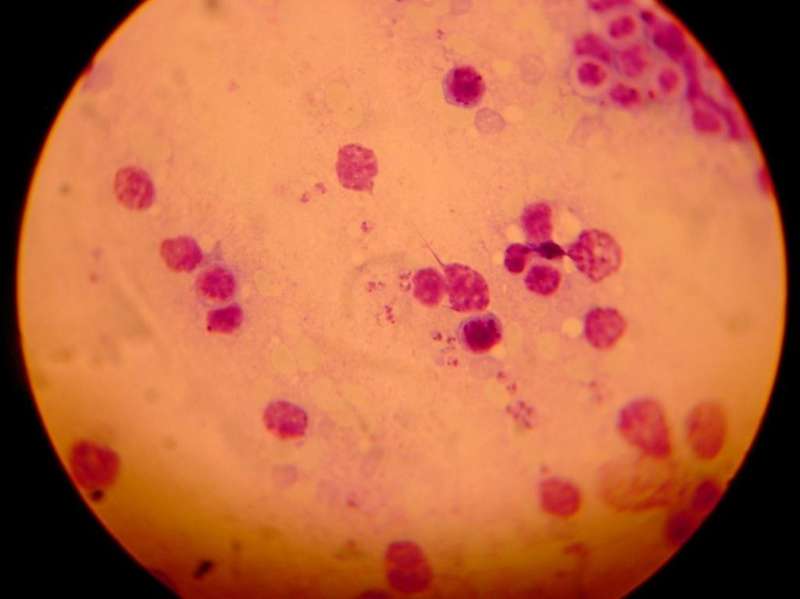Sandfly spit vaccinates mice against leishmaniasis infection

A vaccine against cutaneous leishmaniasis, a skin infection caused by Leishmania parasites, may be spitting distance away—sand fly spit, that is. Saliva from a species of the fly responsible for transmitting leishmaniasis can be used to vaccinate mice against the infection, researchers have shown. The new study, published in PLOS Neglected Tropical Diseases, also found that humans with cutaneous leishmaniasis tend to have lower levels of antibodies against this sand fly saliva than others living in areas where the infection is endemic.
Leishmaniasis develops when an infected sand fly bites the skin of a mammal, transmitting both sand fly saliva and single-celled Leishmania parasites. The bite can then turn into a raised red lesion and, in some cases, form an open ulcer that then becomes infected with bacteria. Sores in the nose and mouth can also cause complications. In Brazil, one of 10 countries where 75 percent of cutaneous leishmaniasis cases are concentrated, the infection is generally caused by Leishmania braziliesis, and is transmitted by the sand flies Lutzomyia intermedia and Lutzomyia whitmani. Previous work showed that immunity to proteins in Lu. intermedia saliva exacerbated leishmaniasis, spurring an increased immune reaction to infected sand fly bites.
In the new work, Camil de Oliveira and Aldina Barral of the Instituto Gonçalo Moniz, Fundação Oswaldo Cruz in Brazil, with colleagues, tested the effect of immunity to the other major sand fly, Lu. whitmani, on leishmaniasis. They removed the salivary glands from Lu. whitmani flies collected in Brazil and used the tissue to immunize mice three times. The researchers showed that the immunized mice immunized developed antibodies to four distinct proteins in the saliva. When the mice were then infected with L. braziliesis, injected through a needle at the same time as sand fly saliva, the immunized mice did not develop lesions, while control mice did. Moroever, the immunized mice had lowed levels of parasites at the injection sites and higher levels of certain immune molecules.
To find out whether the results might have relevance in humans, the team tested for the natural presence of antibodies against Lu. whitmani saliva in nearly 300 people from Corte de Pedra, Brazil, some of whom had active cutaneous leishmaniasis, others who had subclinical infections not causing lesions, and others with no history of infection. They detected the antibodies in all three groups of people, but patients with cutaneous lesions had the lowest levels. The results in both humans and mice are quite distinct from what was previously discovered using Lu. intermedia saliva. However, both studies have yet to be replicated using live sand fly bites, a critical next step since injected compounds don't fully replicate the natural bite.
"Our results reinforce the importance of investigating the immunomodulatory effect of saliva from different species of closely related sand flies," the authors say. "Together, our data reinforce the possibility of employing sand fly salivary molecules as components for a leishmaniasis vaccine," they add.
More information: PLOS Neglected Tropical Diseases, DOI: 10.1371/journal.pntd.0005078

















